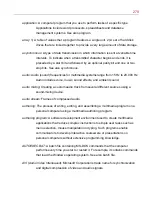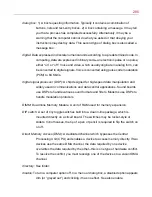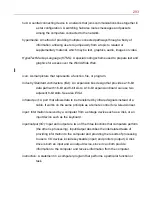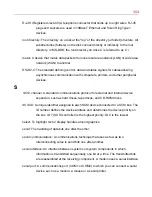
291
folder (also called directory): Part of the organizational structure that allows the operating
system to locate files (documents). Each folder holds a number of related files
and folders (subdirectories).
font: A complete set of characters of one design and size, used to display information on
the screen or output it to a printer.
format: To prepare a blank disk for use with the computer’s operating system. Formatting
creates a structure on the disk so that the operating system can write
information to the disk or read information from the disk.
frame: An individual picture in film and video. Film has 24 fps. Video has 30 fps. With the
SMPTE time code, each video frame has a unique address. On a videodisc, a
frame is a block of coherent information (a picture, block of text, etc.). A
videodisc contains 54,000 frames, each with a unique address.
full duplex: A type of data transmission in which data flows between two devices in both
directions simultaneously. See also half duplex.
full-motion video: 1) Video sequences or systems that provide the number of images per
second to result in the illusion of smooth motion. 2) The rate of standard video
signals in the U.S. (30 frames per second) and in Europe (25 frames per
second).
function keys: The keys labeled F1 through F12. They are located above the
alphanumeric keys on the keyboard. Their function is determined by the
operating system and/or individual programs.
G
gigabyte (GB): A unit of data storage equal to 1,073,741,824 bytes (1024 x 1024 x 1024
bytes). See also byte.
graphics: Information presented as drawings, pictures or other images, such as charts or
graphs.
ground: A conductor to which all components of an electric circuit are connected. It is
connected to the earth and is the point of reference for voltages in the circuit.
Summary of Contents for 3200
Page 1: ... ...
Page 309: ...309 ...
















































